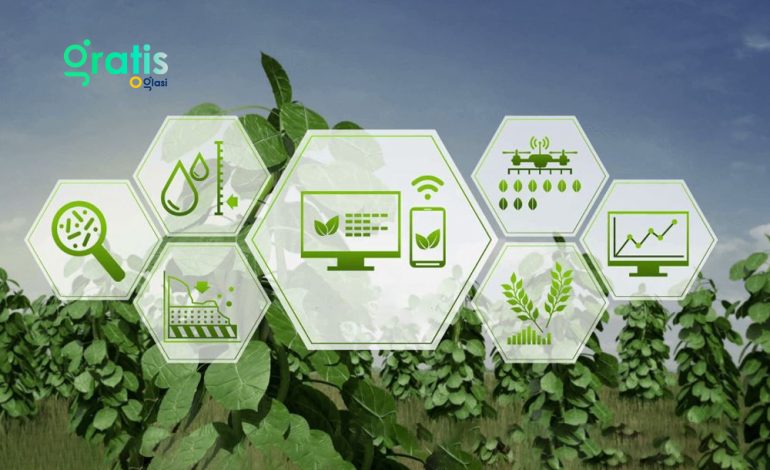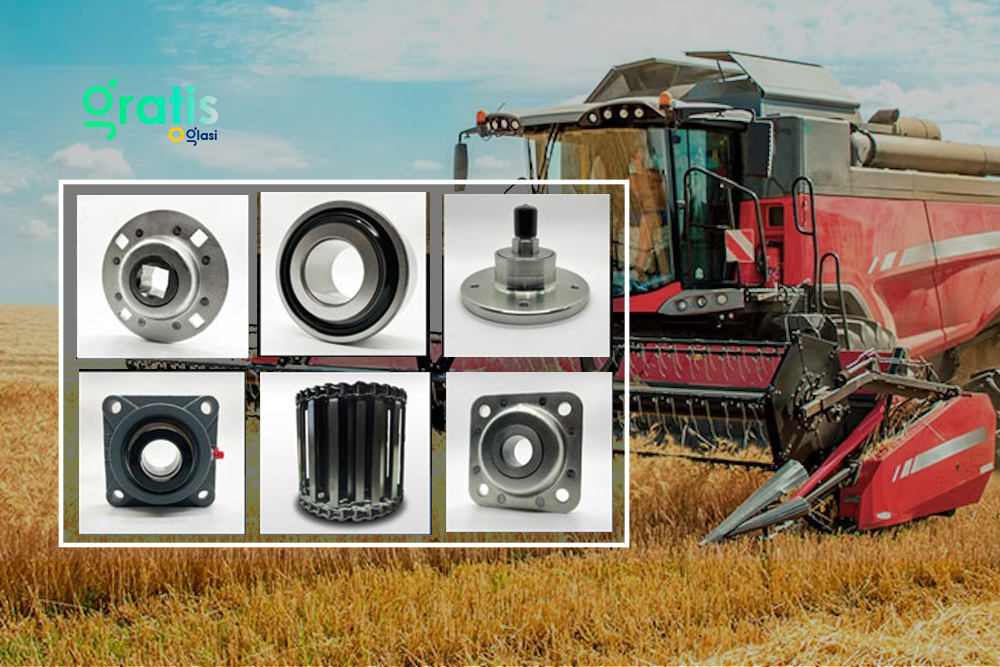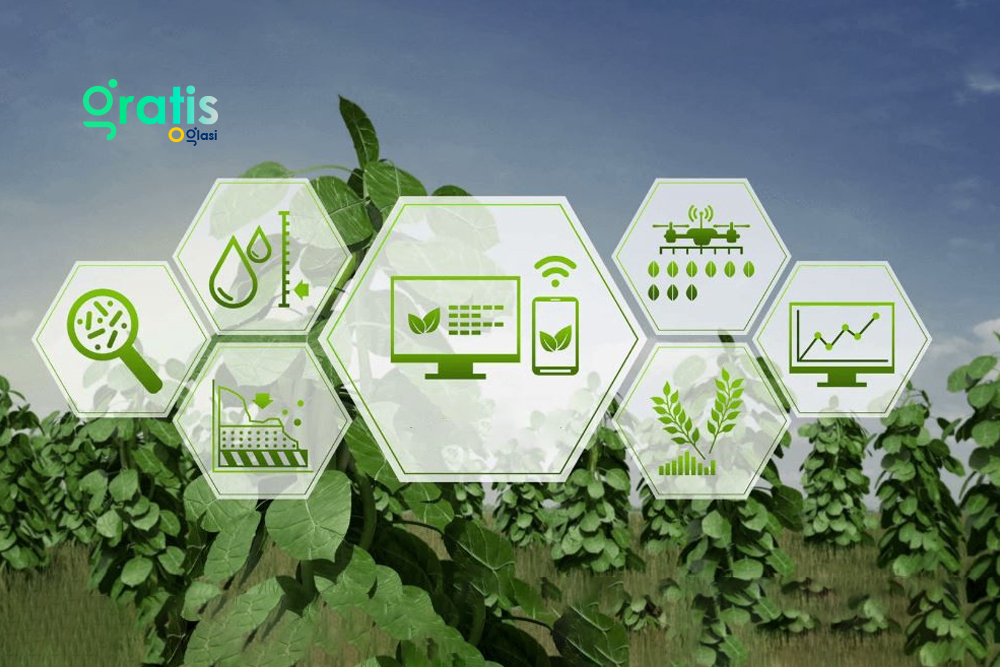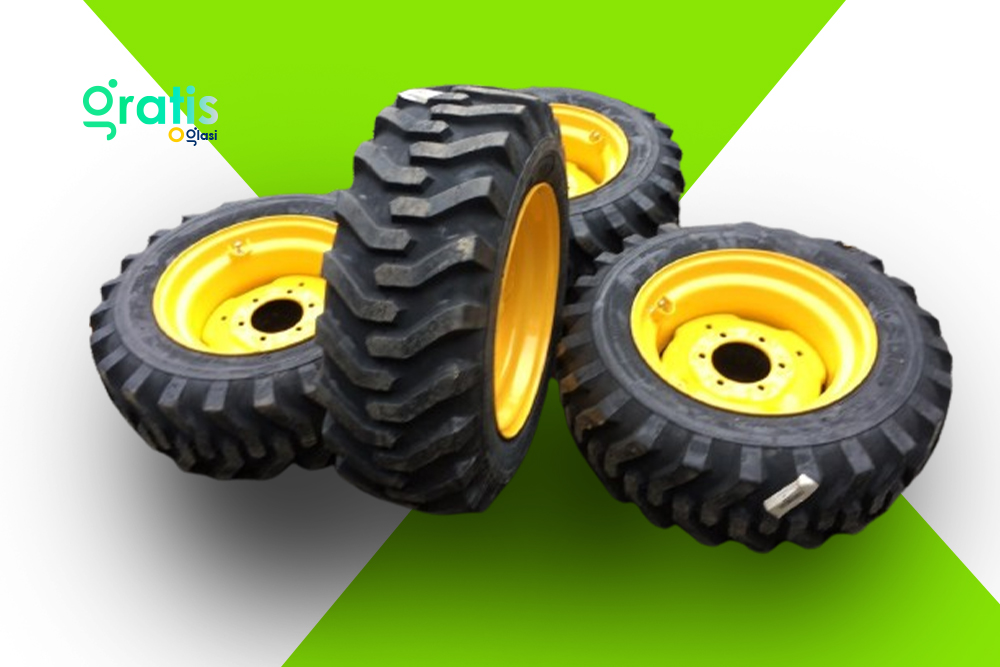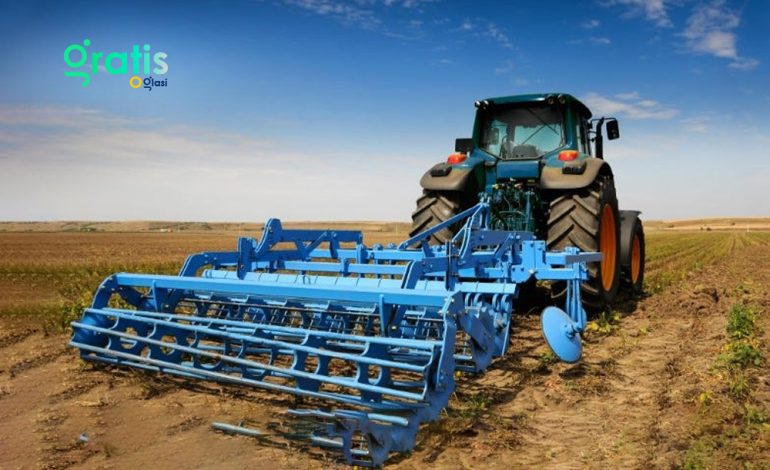
Agriculture Tractor Equipment Essential Tools and Innovations
In places like Bosnia, where agriculture tractor equipment farming is very varied, tractors are changing the way farmers do things. This is happening in both urban and less developed parts of the world.
Tractors are essential for healthy farming, meeting global farming community needs, and enhancing productivity and efficiency.
Various agricultural tractor equipment aids farmers in tasks from tilling to harvesting crops. They’re vital for enhancing farmers’ skills, allowing more accurate and expansive farming. Since the world’s population is always growing, this leads to higher amounts, which help meet the growing need for food. From animal-drawn plows to GPS-equipped tractors, tractor technology progress is closely tied to farming advancement. This revolution shifts towards safer and more effective farming methods, providing better tools and increased power for farmers worldwide.
Types of Agriculture Tractor Equipment
Modern agriculture requires various specialized tools for essential tasks in crop cultivation. There are many kinds of tools for farmers that can be found among the different types of farming tractor equipment. We will look at two main kinds today: plows and harrows. Essential tools prepare soil for planting and ensure healthy plants for a bountiful harvest. For optimal crop yield and improved farming, farmers must fully understand how these tools work.
Plows and Harrows of Agriculture Tractor Equipment
For optimal crop growth, plows and harrows are essential in preparing the land with agriculture tractor equipment. In recent decades, tractors with various plows and harrows have become indispensable on farms worldwide.

- Conventional Plows
Traditional plows have been around for a long time. They turn and loosen the dirt so that it is ready to plant. As the tractor moves forward, the attached moldboard is lifted and turned to cut through the dirt. Getting rid of existing plants, adding organic matter, and making a good seedbed are the major goals. Traditional plows come in various sizes to suit the diverse needs of farmers working with different soils and methods.
- Disc Harrows
Disc harrows are cutting-edge tractor tools for soil preparation, versatile and highly effective. The disc harrow is made up of a group of curved metal discs instead of a single moldboard. As the tractor pulls the plow, the discs tear through the dirt, eliminating clods, cutting waste, and leveling the ground. Disc harrows are the best tools for preparing seedbeds and getting rid of weeds. They really shine when smaller tillage is needed, giving farmers a flexible tool for making the best soil for planting.
Planting Equipment
Specialized planting tools are now necessary for modern farming because planting well is a key part of farming success. Attached to tractors, planting tools enable farmers to easily and accurately sow seeds at optimal distances for bumper crops.

- Seed Drills
Seed drills are the most advanced tools for growing. The job of these tools is to plant seeds at exact times, following a set routine. Opting for seed drills over traditional methods ensures more even seed germination and stronger plant growth. Modern seed drills, equipped with GPS-guided systems and variable seed rate control, allow farmers to enhance planting precision and efficiency.
- Planters
Planters elevate the accuracy of agriculture tractor equipment, providing a more precise way to place seeds. This specialized equipment plants seeds at specific times and locations to optimize soil-seed contact. Planters can use cutting-edge technology like seed singulation and measuring systems to make sure that seeds are spaced and placed correctly. Some planters can also plant more than one type of seed at the same time, which gives farmers more options when it comes to picking crops and carrying out planting plans.
The Cultivation and Tillage Implement that Enhance Crop Prosperity
The unique tools that tractors use allow them to grow and plow with amazing accuracy. Getting the soil ready is an important part of growing plants, and tools like rotating tillers and cultivators are used to do this.
Rotary tillers are the best agriculture tractor equipment for working soil because their blades or tines rotate, breaking up hardened dirt and adding organic matter to it. You can change their depth and width, which shows how flexible they are. This means they can be used on different types of dirt. Rotary tillers are necessary for a good crop start because they make a finely shaped seedbed that helps seeds grow.
Cultivators, on the other hand, work close to the surface to control weeds and prepare seedbeds for planting. They aim for shallow soil cultivation. Cultivators, which can be changed with tools or teeth, don’t change the structure of the soil. This method makes the soil less disturbed while boosting air flow, water retention, and nutrient uptake. Rotary tillers and cultivators work together to show the complicated science of preparing the soil, which is necessary for today’s changing agricultural setting to help plants grow well and produce lots of food.
Advances in Agricultural Machinery revolutionize harvests
A good crop is the last step in the farming cycle, and special machines have changed this important step. Combine harvesters and forage harvesters are examples of new harvesting tools that have made tractor-pulled farming much more accurate and efficient.
- Combine Harvesters
Today, we refer to amazing pieces of farming technology as “all-in-one” agriculture tractor equipment solutions or combine harvesters. These tools can do a lot of different things, like cutting, threshing, cleaning, and more. Combine harvesters make it easier to gather crops like wheat, barley, and maize.
Up front, a header cuts the crop, and internal processes separate the grain from the straw. Their efficient operation speeds up gathering reduces costs, and requires fewer people to perform the work.
- Forage Harvesters
Forage harvesters’ main job is to gather grasses, legumes, and other fodder items so that animals can eat them. These tools efficiently cut and chop standing crops, ensuring a steady and easily digestible feed for cattle. Forage harvesters typically feature a device to collect and handle the material they gather, along with adjustable cutting heights. For raising animals, farmers use forage harvesters in various situations to enhance silage efficiency.
A GPS-guided tractor and an automated seeding system enable Agricultural Precision
With the rise of precision farming technology, farmers now think about and use different ways to boost output and cut down on mistakes. Automated Seeding Systems and tractors that GPS leads are at the forefront of this new wave of technology. GPS-guided tractors move through fields with unmatched accuracy, using cutting-edge Global Positioning System technology to find the best places to plant and gather crops and avoid using up too many resources at once. On the other hand, automatic seeding systems enhance planting accuracy by ensuring an even spread of seeds, facilitating faster crop growth. Taking these new developments together, they show how revolutionary precision farming could be in making farming healthier and more productive while also making operations more efficient.

Modern Trends in Agriculture Tractor Equipment
The production of more eco-friendly tractor attachments indicates that the farming sector is becoming more open to new ideas. These days, two big trends are affecting the creation of new farming tools: sustainability features and the subsets of these fuels that are good for the earth and designs that use less energy.
Tractor Innovations Shaping eco-friendly agriculture
Adopting energy-efficient designs and using fuels that are better for the environment in modern agriculture tractor equipment has marked a big shift toward farming methods that are sustainable and care for the environment. By using cleaner energy sources like biodiesel, renewable natural gas, and electricity, agriculture tractors are helping to lessen the damage that farming does to the environment.
They achieve this by lowering their total carbon footprint. More and more, designers are focusing on making engines and transmission systems more efficient. These systems use cutting-edge technology to cut down on emissions while improving performance. Because they use fuels that are both energy-efficient and good for the environment, agriculture tractors and the equipment that goes with them are very important to the farming industry’s efforts to make the future more sustainable and profitable.
Transforming Tractor Technology with Artificial Intelligence
All thanks to AI, the world of agriculture tractor equipment is going through a huge change. Smart sensors put throughout the machinery allow it to keep an eye on the quality of the soil, the health of the crops, and the efficiency of the machinery in real time. This information helps farmers make the best use of resources and boost overall agricultural output by giving them data-driven insights. Predictive repair systems use data from sensors and past performance to figure out when parts might break. They also bring a new level of sophistication to managing tractors.
This approach for preventative maintenance cuts down on downtime and makes equipment last longer. It also saves money and makes operations more efficient. With the addition of AI, smart sensors, and predictive maintenance, tractor technology has hit a turning point. This will make farming more efficient, better for the environment, and more accurate in the future.
Agriculture Tractor equipment with multifaceted advantages
- Precision-guided agriculture tractor equipment tools help people do their jobs more accurately.
- Automation and real-time data analysis can help farmers work faster.
- Smart sensors and GPS directions make managing resource usage more accurate and easier.
- Focused strategies have cut down on waste and the damage it does to the earth.
- In the long run, investments made at the start pay off.
- Using resources more efficiently and effectively reduces operating costs.
- Two parts of a long-term economic plan are more productivity and less waste.
Challenges in Implementing Advanced Tractor Technology in Agriculture
- At the start, we needed a lot of money for agriculture tractor equipment.
- Funding problems for farms that don’t have as many resources or that run smaller businesses.
- The need for a skilled workforce.
- It takes time and money to teach people how to use new technology.
- Parts that are complicated need to be understood by experts.
- Always trying to ensure lifespan while avoiding downtime.
A Pioneering Future for Tractor Equipment in Agriculture
Shortly, agriculture tractor equipment will go through huge changes thanks to the focus on agricultural robotics and AI-driven decision support systems. Robotics’ development of fully and partially self-driving systems for farming is a huge step forward that changes the traditional role of humans in the field. When robots are used for selective harvesting and precise planting, it opens up a new era of scalability and resource optimization while also offering higher efficiency. The future of agriculture that is sustainable and based on technology looks good since humans might be able to work with robotic machines.

At the same time, AI-driven decision support systems are going to change the way farm equipment works. These systems use AI to sort through huge amounts of data in real-time, showing important details about things like crop health, weather, and when to plant. This proactive decision-making method, which is guided by powerful algorithms, is the key to getting the best results while having the least impact on the environment. Tractor equipment is on the way, which will make farming more efficient and environmentally friendly and open up new ways of doing things. Farmers are looking forward to these new technologies.
The Sustainable Cultivation of Agriculture Using Tractors
To reach the goal of healthy agriculture, it is important to combine tractor-driven methods like Conservation Tillage and Organic Farming. Agriculture tractor equipment plays a crucial role in enhancing soil health and implementing practices that are good for the environment. This is because it blends the usefulness of tractors with organic principles. Tractors are necessary for tasks like plowing and harvesting that are in line with the ideals of environmentally friendly farming. Simultaneously, Conservation Tillage employs tractors with special attachments to ensure that they do not move or wash away the soil excessively. This protects both the structure of the soil and the plants and animals that live in it. All of these eco-friendly practices demonstrate that farmers care about the land and want to keep it healthy and strong for the future.
Overcoming Challenges in Tractor Technology Integration in Developing Nations
Accessibility issues and the need for flexible solutions make it hard for poor countries to use agriculture tractor technology on a large scale. Inadequate facilities and a lack of funds hinder the widespread use of modern agriculture tractor equipment due to accessibility issues. To get past these problems, we need targeted actions to make sure that things are affordable and distributed properly, especially for the many small-scale farmers who work in agriculture. Farmers need to adjust tractor technology to fit local conditions, considering factors such as uneven ground, ease of maintenance, and compatibility with different farming methods. We need to employ adaptive methods simultaneously.
In developing countries, the proper utilization of tractor technology can significantly enhance production and economic growth, contingent upon providing farmers with adequate training.
Frequently Asked Questions (FAQs)
Organic farming with tractors is good for the earth because it doesn’t use synthetic pesticides and fertilizers. Tractors play a big role in sustainable farming because they help with jobs like tilling the soil and planting, which are eco-friendly farming ideas.
When flexible solutions change tractor technology to fit local agriculture tractor equipment conditions, they take into account things like different types of land and farming methods. These solutions get around problems like a lack of resources and infrastructure so that poor countries can use tractor technology successfully.
Precision agriculture technology is a revolutionary tool that promotes environmentally friendly practices, boosts productivity with data-driven insights, and makes the best use of all available resources. Precision-guided systems on tractors help with fieldwork, save money, and reduce pollution.
Conclusion
Finally, the study of farm tractor technology has revealed a world of discoveries, challenges, and a strong commitment to being environmentally friendly. After covering the basics, we delved into the numerous features of current agriculture tractors, discussing topics such as precision farming, sustainability, and the application of AI. The main benefits of these new ideas are that they make farming more efficient, make better use of resources, and add to the history of modern farming. Our estimates say that the use of robotics and AI-driven decision support systems will shape the future of agriculture tractor equipment. In the future, responsible farming methods and new technologies will work together to make agriculture more efficient, long-lasting, and productive as long as we can get past application problems and work toward sustainability in different agricultural settings.

